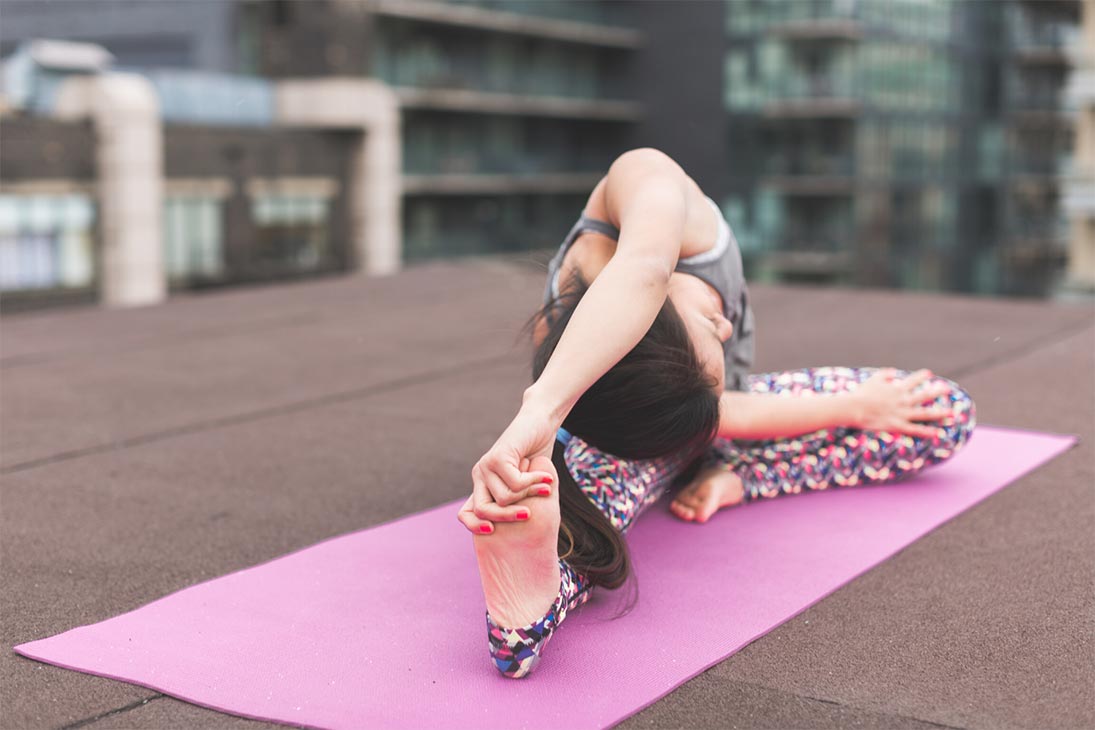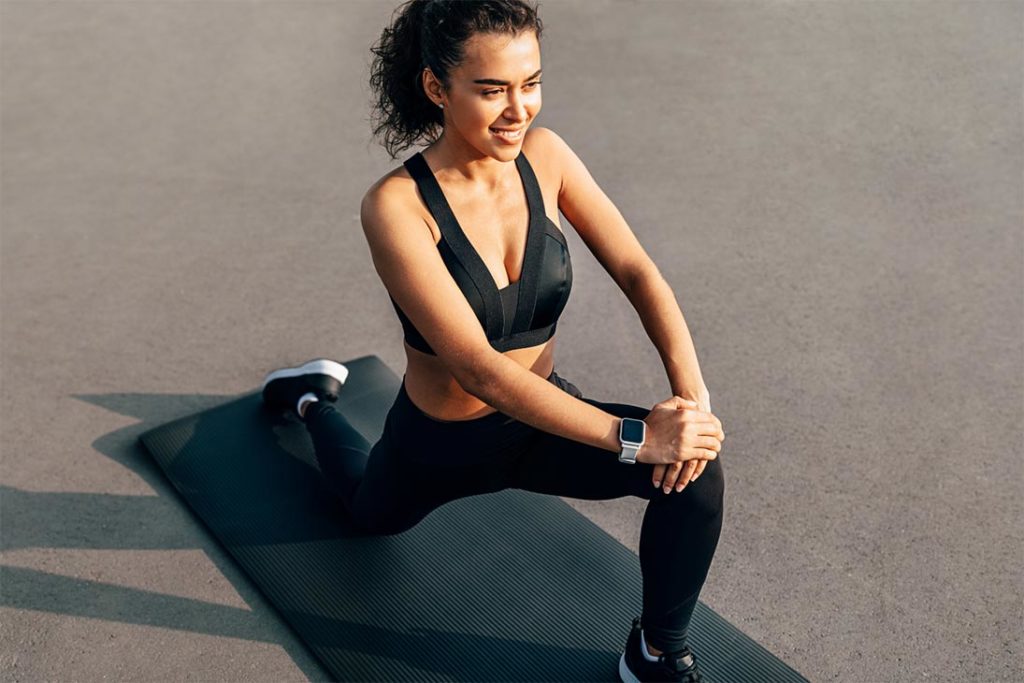Is there anything better than a juicy hip stretch during yoga class? When carried out correctly, there are endless health benefits linked to hip flexibility like improved circulation, better positioning of the lower back and overall spine, better muscle support, and posture.
Nonetheless, as it happens with most forms of exercise, mindfulness is key. Rushing through a pose or trying exercises that are too advanced for your current level can result in consequences that are inconvenient at best and damaging at worst.
According to a 2008 study, hip injuries of the femur and socket area are relatively common in women aged 30-40 years old, meaning hip flexibility should be a part of everyone’s fitness regime.
So what are the best ways to keep your hips safe from injuries without missing out on the benefits of your hip opening practice?
Below we’ll analyze some of the causes of yoga-related hip injuries and how to prevent them.
*This post may contain affiliate links and Yoga Pose may earn a small commission when you click on the links at no additional cost to you. As an Amazon Affiliate we earn from qualifying purchases. You can read our full disclaimer here.

Excessive Flexibility
Yes, you read that correctly. It is common knowledge in the wellness community that forcing a stretch before you are ready can lead to injury, but we are not necessarily used to considering the risks associated with over flexibility.
The reason why far more women seem to be vulnerable to moderate to severe hip injuries –some of them even requiring replacement surgery — is that women are naturally more flexible than men.
While flexibility is typically considered an advantage, it does come with its often underestimated set of challenges, as very flexible individuals will sometimes unwittingly stretch beyond safety, inflicting injury.
In her book, YogAlign, yoga veteran and author Michaelle Edwards mentions her concerns around pushing too hard during yoga practice. In the author’s words, when not paired with strength and awareness, flexibility can sometimes become a liability.
Edwards offers some valuable advice to prevent yoga-related injuries.
Besides balancing out your flexibility practice with strengthening exercises, she recommends you avoid holding intense stretches for longer than a few seconds, and always check in with your breath: in any pose, you should be able to take a deep breath that fully engages the diaphragm and rib cage. Not being able to breathe comfortably in a pose is a sign that the pose is disrupting the body’s natural dynamics and balance.
Edwards also emphasizes that our bad habits off the mat — such as sitting poorly in a chair for extended periods of time — can also have an impact on our joints’ health.
Because of their natural structure and ability to perform a wide range of movements, our hips are already naturally prone to wear and tear. Stretching over your comfort limits in positions like Extended Triangle Pose or Standing Forward Bend time and time again can really take a toll on your hips. The solution? When tilting in Trikonasana, avoid bumping your hips over the opposite side in an attempt to sink all the way into the pose as this puts too much stress on your joints. Instead, enter the asana from a holistic place that respects the natural alignments in your body. Do not force poses to sink into them too quickly.
As for Standing Forward Bend or Uttanasana, a good option is to keep your knees gently bent and engage your glutes. This will not only protect your hips but also the knees themselves – all the while exercising your glute muscles.
Active engagement of our leg and glute muscles during yoga practice is necessary to protect ligaments and tendons.

Excessive Passive Stretching
Passive stretches like Supine Pigeon Pose or Child’s Pose play a useful role in yoga, especially when used as a counter-posture to relax the back after an intense asana or sequence.
Special attention though must be paid to passive hip and leg stretches. Forcing one leg behind your head before your muscles are ready to support such intensity can have risky implications: our muscles are there to help absorb the impact of our movements on the joints. Completely relaxing our muscles while overextending will, therefore, fail to protect our joints from wear and tear, as well as burden our ligaments and tendons.
Passive stretches like Supine Pigeon Pose (Supta Kapotasana) have been associated with hip labral tear, a painful injury affecting the cartilage around the hip socket. Not unlike many injuries, labral tears can result from a one-off intensive session or develop over time through repeated exercises or poses that are damaging to the hip structures. For this reason, Supine Pigeon should not be incorporated into every single yoga session. Instead, it is preferable to practice the posture scarcely and never push it too hard or hold it for longer than five breaths.
Other intense hip openers like Frog Pose (Mandukasana) also come with a considerable degree of challenge. Once again, the key to safely practice this posture is core engagement and mindfulness. Beginners will have a tendency to either force their knees open in an attempt to get closer to the mat or lose that core engagement, letting the lower back sink. Dumping your whole body weight on your groin and hip area can result in great injury. Shifting the weight forward towards your forearm can help prevent that.
Similarly, postures like Low Lounge (Anjaneyasana) need a deep core engagement and correct alignment to avoid unnecessary strain in the hip and inner thigh area. Furthermore, the front knee should be right underneath your toes to avoid dumping excessive weight on that knee.
Complementing your practice with strengthening poses and exercises will help protect the delicate structures of the hip area, whereas a mindful combination of active and passive stretching will help you obtain long-lasting flexibility.

Protecting Your Hips During All Yoga Poses
It is worth mentioning that even some asanas that are not primarily labeled as hip openers can also have a negative impact on the area.
A great example would be Extended Hand-to-Big-Toe Pose (Utthita Hasta Padangusthasana). This is a very beneficial posture that promotes balance, strengthens back and arm muscles and stretches your hamstrings. Once again, in order to protect your hips you should avoid over stretching and always keep an active core, legs and glutes as well as squared hips and open, relaxed shoulders. Bending or lowering your leg to protect the alignment in your hips is always fine, if not encouraged. As you might have heard from your yoga teacher, it is best to do less and do it right.
Yoga is a wonderful holistic practice that has succeeded in staying relevant throughout the eras. While most of its ancient principles have proven to be beneficial for the body and mind, the medical professionals’ opinion around specific asanas is ever-evolving.
As our knowledge and understanding of physiology, anatomy and psychology progresses, so does our understanding of what safety practices we should adopt to maximize the long-lasting benefits of yoga, all the while minimizing the risks.



